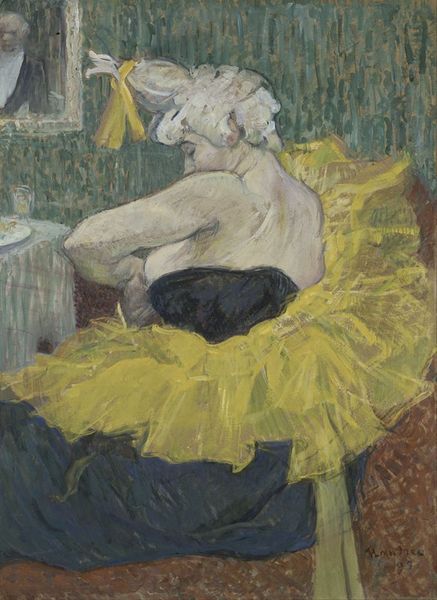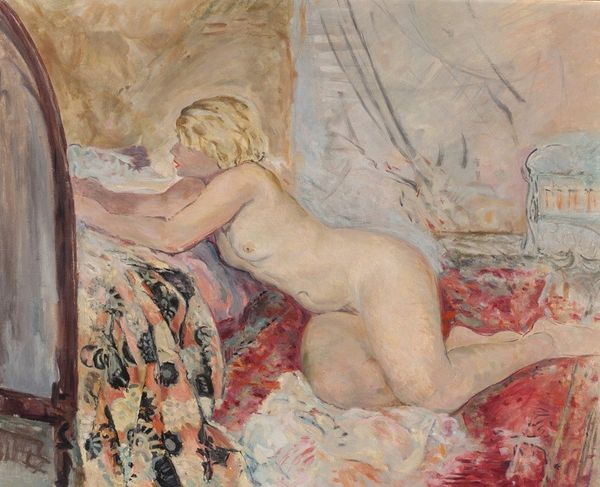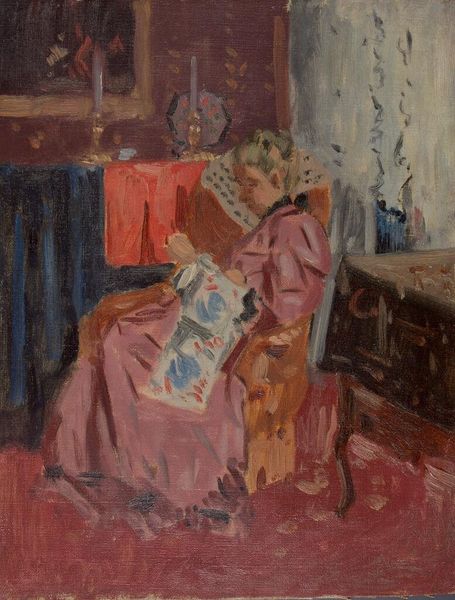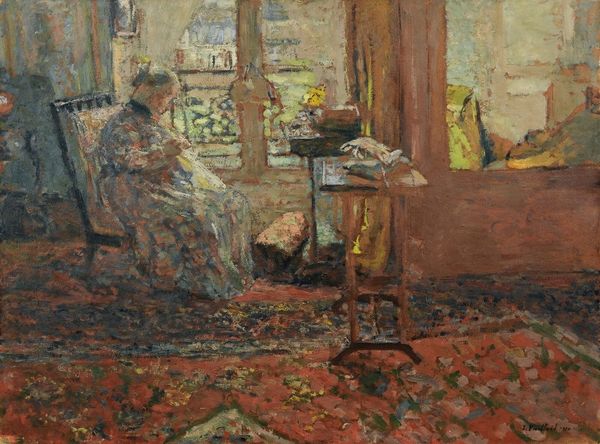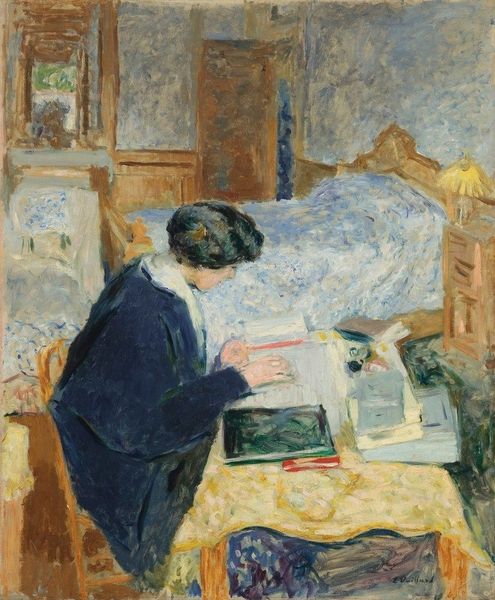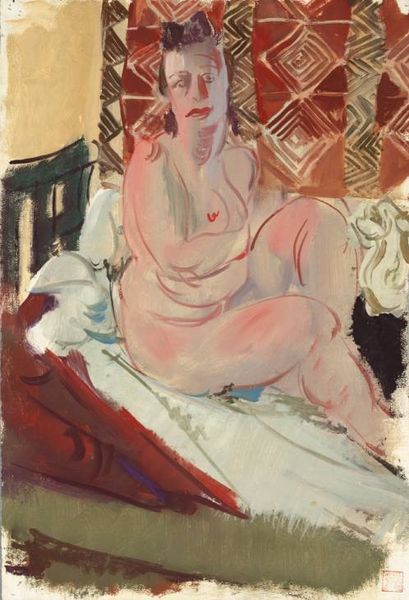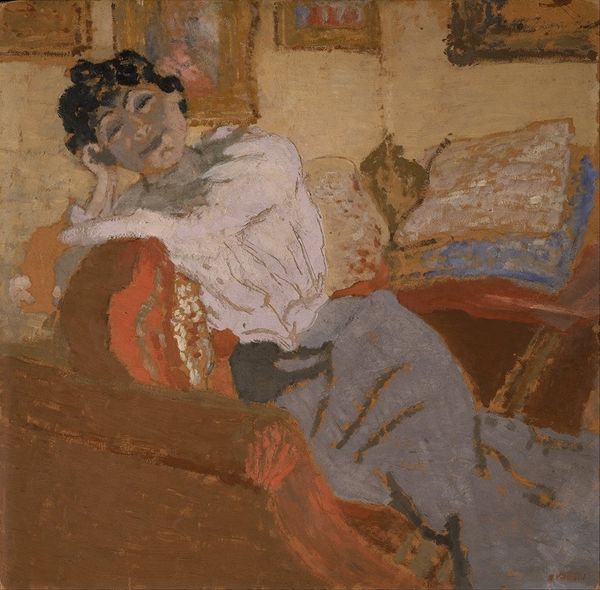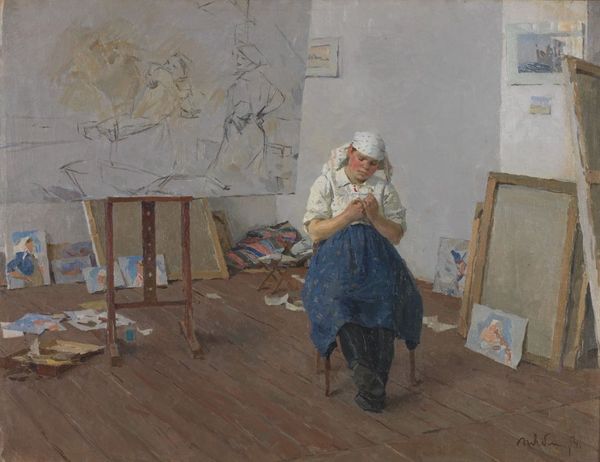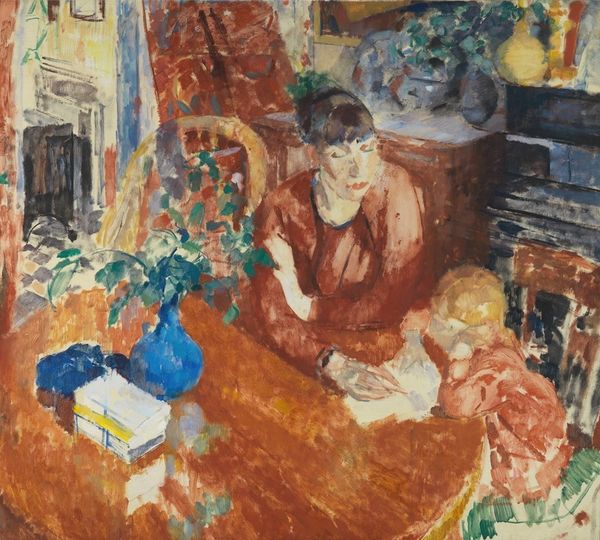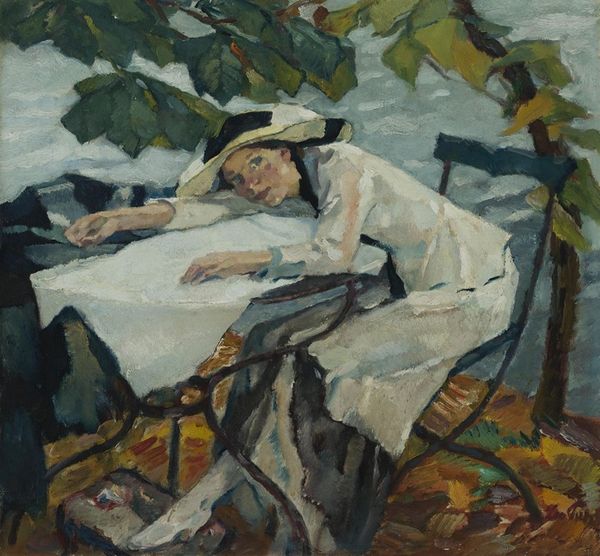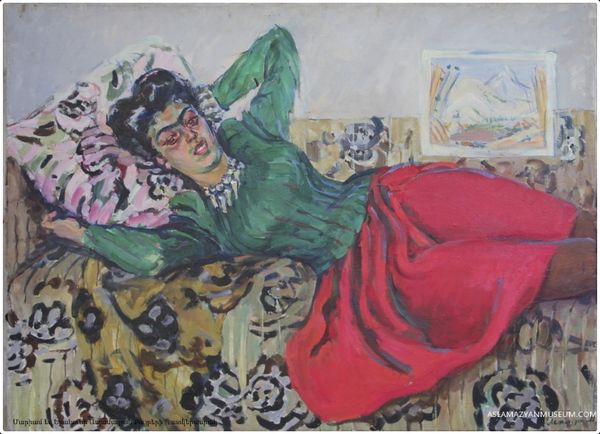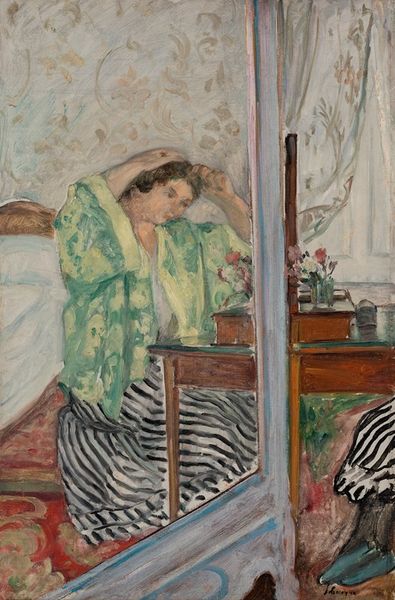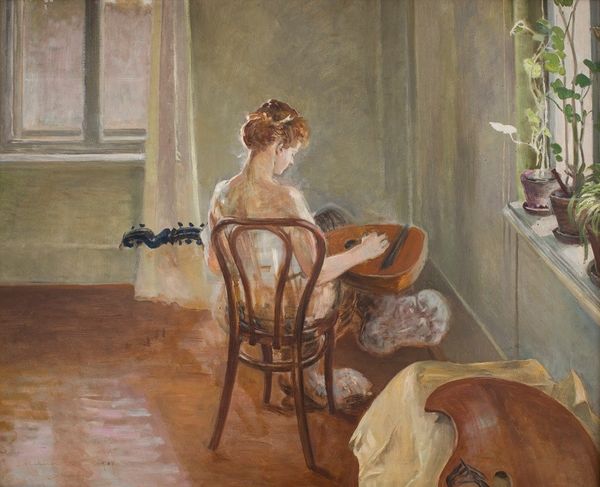
painting, oil-paint
#
painting
#
oil-paint
#
soviet-nonconformist-art
#
oil painting
#
academic-art
#
realism
Dimensions: 95 x 115 cm
Copyright: Mariam Aslamazian,Fair Use
Curator: Looking at Mariam Aslamazian’s oil painting, titled "My Studio in Leningrad," created in 1940, one immediately senses a personal space, a world held within these confines. Editor: It feels incredibly intimate. There’s a kind of deliberate disorder, yet the objects feel arranged in a meaningful way, almost staged for observation. It hints at creativity, reflection… perhaps even isolation? Curator: The painting does carry a sense of inward focus. Leningrad, as it was then, was a cultural hub undergoing intense social and political change. The studio as a safe haven, becomes, symbolically, both womb and tomb, a place of rebirth and retreat. What do you make of the visual vocabulary at play here? Editor: Well, the stark white bust feels classically informed, referencing ideals of beauty, permanence… though juxtaposed with the scattered tubes of paint, it feels as if those ideals are somehow being actively taken apart, re-evaluated. And what about the basket? Overstuffed. The curtain in the background seems staged or constructed. Nothing in the space appears happenstance. Curator: Exactly. Consider that Soviet Nonconformist Art often relied on these strategies. This aesthetic challenged socialist realism—so any classical nod can also be understood as subversive. A still life in its simplicity speaks to the enduring values of beauty during turmoil, an unspoken quietude within the public drama. Editor: And yet it invites so many questions. I keep returning to that unfinished painting propped up amongst the paints. What statement is she making with her inclusion of these intimate works in progress within the finished one? Does its presence serve a wider socio-cultural comment? Curator: It speaks volumes about process and transformation, things which the artist in this turbulent period, must have contemplated in the confines of her personal sphere. Editor: Ultimately, I find this glimpse into Aslamazian’s private domain far more telling about Leningrad in 1940 than any grand public tableau could convey. Curator: I concur; the intimate setting captures how universal symbolic longings for timeless aesthetic and creativity persevered even during politically volatile eras.
Comments
No comments
Be the first to comment and join the conversation on the ultimate creative platform.

